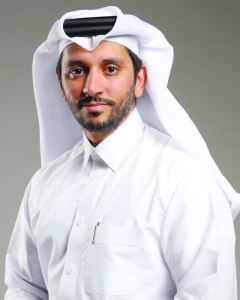The rise, and rise of healthcare spending

By Fahad Badar
One of the paradoxes about the human condition is that, as we live longer and healthier lives, spending on medical treatments increases. The annual Global Medical Trends Survey by the actuarial consultancy Willis Towers Watson reported a record high of 10.7% increase in medical care benefit costs in 2023, up from 7.4% in 2022. There are some regional variations, with cost rises in Europe falling from 10.9% to 9.3%. The Middle East and Africa registered a higher level, rising from 11.3% to 12.1%.
Upward pressure on the cost of healthcare has many factors. The global increase in inflation in 2022-23 affected the health sector, but inflation in the sector is more complex than in others. It is not only affected by labour and input costs, but by a complex array of demographic, behavioural and societal factors.
With universal state coverage and affordable private health insurance, there is higher utilization of services – people will seek medical help for more minor ailments where in the past they may have just rested and taken an aspirin. This is observable in Qatar, and independent reports confirm that high utilisation it is a trend in many countries.
If a patient is covering the cost of their private care, then they have a disincentive to request additional tests or treatments that are not absolutely essential. Where costs are covered by insurance, however, there is little such disincentive for either patient or doctor, and the medical staff may wish to be on the safe side by arranging more than the minimum number of tests.
A similar effect occurs in a jurisdiction such as the USA with a mature legal system and a track record of compensation. Doctors will want to prevent being sued for negligence and this can result in a natural tendency to maximise the number of tests and treatments.
As well as inflation at a cost of service level, aggregate healthcare spending has risen inexorably. One of the paradoxes is that preventative health programmes do not always reduce spending on treatment over the course of people’s lifetimes. For example, reduced smoking and consumption of alcohol curbs demand for some services, but people may be living longer with chronic conditions such as diabetes.
Similarly, artificial intelligence (AI) promises faster, more accurate diagnosis of some conditions at an early stage, which is timely and reduces the number of clinical hours needed at diagnosis stage, but AI requires considerable investment, training, and computer storage capacity.
All of these factors push healthcare spending and unit costs upwards. There are some disinflationary forces, such as a greater adoption of generic drugs, but so far not enough to reduce inflation significantly.
There is potential for improvement in the efficient allocation of resources, however. New technology, for example, is not only a case of precision diagnosis with AI tools. It can also predict better clinical outcomes, and optimize sleep monitoring.
At the administrative level, AI can better forecast patient flows and help adjust staffing levels and resources accordingly. Tools can be used in public health to monitor trends in morbidity and mortality, and link these to lifestyle and environmental factors.
Increasingly, healthcare is a global industry, and with affordable air travel, the phenomenon of health tourism has grown over the years. People who live where treatments are expensive – such as the USA or Germany – may choose to have an operation in a location such as Croatia, Brazil or Thailand where the cost is much lower. Even if they also have a vacation as part of the trip, the overall cost may still be less.
For many patients, the quality of the medical treatment is the equivalent of what they would experience at home, however this may not be guaranteed, and there are issues around quality control and standards. Two online firms based in Germany, Qunomedical and Medigo, have been set up to offer more information around cost and quality in health tourism.
The principal demographic driver internationally is rising life expectancy. This is not only a phenomenon of the wealthiest countries. Absolute poverty has fallen dramatically in the past 30 years, especially in Asia. But while people are living longer, they may have chronic conditions, and they may seek medical help even for minor conditions if access is easy and affordable.
The author is a Qatari banker, with many years of experience in the banking sector in senior positions






